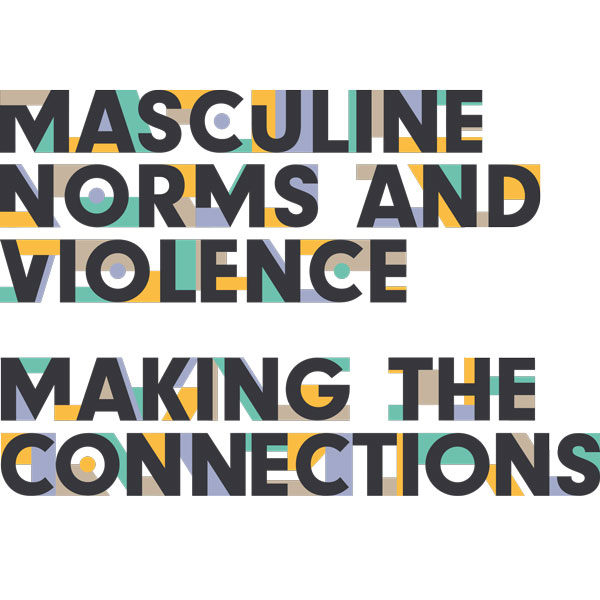
Este blog forma parte de la serie "Estableciendo Conexiones". Cada blog se centra en una forma específica de violencia.
Este año, Equimundo y Fundación Oak lanzaron Normas masculinas y violencia: estableciendo conexiones, un nuevo informe que examina los vínculos entre las normas masculinas dañinas y ocho formas de comportamiento violento.
Si bien no hay nada inherente a ser hombre que impulse la violencia, la forma en que socializamos a los niños en sus identidades como hombres y lo que esperamos de ellos —es decir, las normas sociales de masculinidad— está innegablemente vinculado a la violencia. De hecho, a menudo se cría, socializa y se anima a los niños y a los hombres a usar la violencia de alguna forma; en general, los hombres y los niños tienen una probabilidad desproporcionada de perpetrar la mayoría de las formas de violencia y de morir por homicidio y suicidio. Sin embargo, la investigación afirma que esta violencia es prevenible, la igualdad de género es alcanzable y las normas e ideas no violentas sobre la masculinidad son prevalentes y poderosas.
This fourth blog in the Estableciendo las conexiones series focuses on bullying. It breaks down the facts on bullying, its linkages to other forms of violence, and recommendations for action.
Acoso escolar
Los hechos
El acoso escolar por parte de hombres y niños se manifiesta de diversas maneras. En un estudio de 2017, La caja del hombre, more than one-third of young men in the United States, United Kingdom, and Mexico reported having perpetrated verbal, physical, and/or online bullying in the month prior to data collection.
Being a victim of bullying is a common experience for young people, and some youth are aware that gender non-conformity (being gay, lesbian, bisexual, transgender, or otherwise non-conforming) was a reason behind being bullied. Youth who do not conform to social norms related to gender and sexuality are at the highest risk of being bullied.
Boys and girls often experience bullying differently. Boys are more likely to be recognized by others as victims of bullying. However, boys are more likely than girls to experience harmful – rather than helpful or supportive – public acknowledgement of this victimization.
Los enlaces
Las masculinidades son a menudo la raíz del acoso escolar perpetrado por los hombres. La caja del hombre En un estudio, los hombres jóvenes que tenían actitudes de género más inequitativas (sobre una variedad de temas, no solo sobre la violencia) eran significativamente más propensos a informar haber perpetrado y experimentado las tres formas de acoso: verbal, en línea y físico.
Research suggests that bullying behaviors often share common root causes: the perpetrator’s desire to demonstrate power and control over the victim and the use of bullying to enforce gender conformity. Many researchers conclude that gender identity and violent gender norms contribute to bullying, alongside many other interwoven factors.
El acoso puede proporcionar una vía para alcanzar o mantener el estatus social dentro de entornos grupales, como escuelas y lugares de trabajo.
Las intersecciones
Any thorough explanation of bullying behavior must include influences beyond hegemonic masculinity. Analyses of these causes identify a variety of intersecting levels of influences: the individual, family influences, peer influences, school influences, and community/cultural influences (including poverty and media influences).
Los niños expuestos a contextos y relaciones con gran conflicto, hostilidad y abuso son más propensos a cometer acoso escolar, un hallazgo similar al de otras formas de violencia con transmisión intergeneracional. Se ha demostrado sistemáticamente que los entornos familiares y educativos hostiles son factores de riesgo de acoso escolar.
Physical location, social context, and age intersect with and normalize boys and men’s perpetration of bullying. For instance, in school contexts, boys’ physical aggression is often legitimized as “boys will be boys,” whereas the same behavior by girls raises questions, and the same behavior by a middle-aged man in a work setting might be considered inappropriate.
De la teoría a la práctica
Very few bullying-prevention programs, particularly in the Global South, take a gender-transformative lens or work to deconstruct harmful masculinities. Initiatives aiming to prevent bullying should focus on the following transformations of harmful masculine norms:
- Engage men and boys – and women and girls – in discussions about how traditional gender norms and gender non-conformity are connected with perpetration and experiences of bullying.
- Explain, illustrate, and discuss the direct connection between the perpetration of bullying and power, control, and social acceptance, being careful to do so in a way that invites self-awareness rather than placing blame.
- Brindar a los participantes un espacio seguro para practicar formas no violentas y más saludables de navegar en grupos de pares y dinámicas sociales.
- Discuss ways that participants can foster group settings and peer networks that value healthy expressions of masculinity and embrace rather than punish individual differences.
Lea el resto del Estableciendo las conexiones blog series to learn more about intimate partner violence; physical violence against children; child sexual abuse and exploitation; homicide and violent crime; non-partner sexual violence; suicide; and conflict and war.
